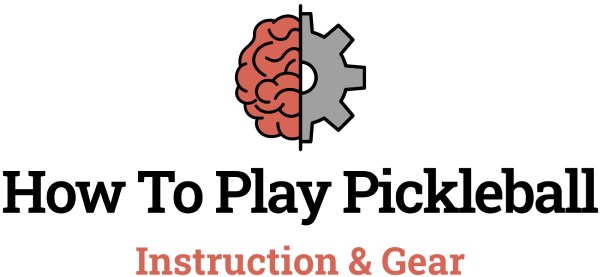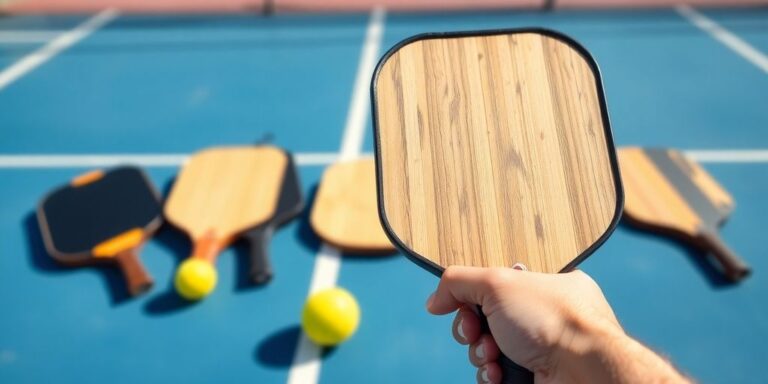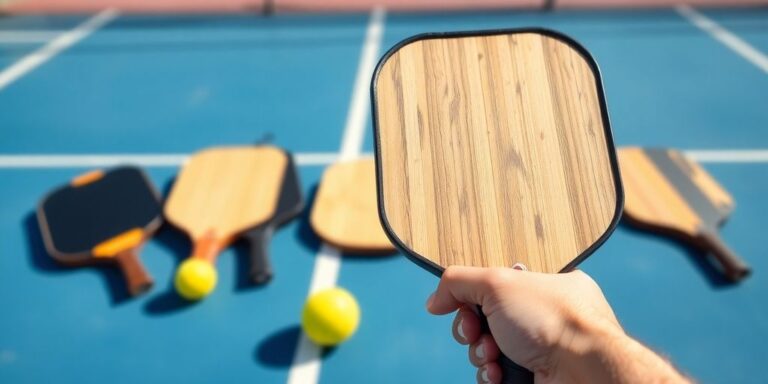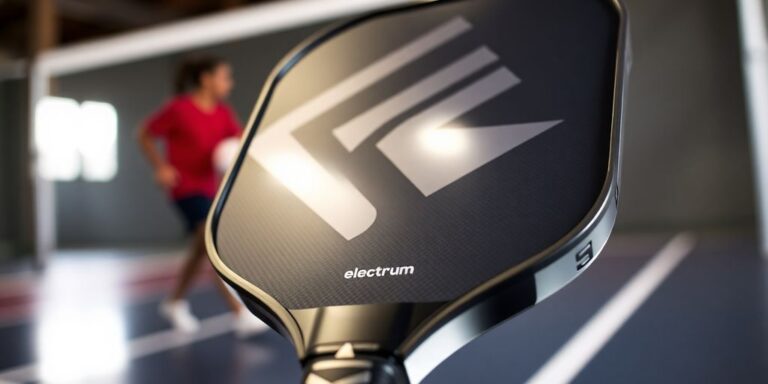As pickleball continues to grow in popularity, more players are looking for tools to enhance their game. One such tool is the pickleball launcher, which can help players practice their shots and improve their skills. But with so many options available in 2025, how do you choose the right one for your needs? This guide will walk you through everything you need to know about pickleball launchers, from understanding their benefits to selecting the best one for your skill level.
Key Takeaways
- A pickleball launcher is a device that helps players practice by automatically sending balls to them.
- Using a launcher can improve your game by allowing you to focus on specific skills and techniques without needing a partner.
- There are different types of launchers, including manual and automatic models, each with unique features.
- When choosing a launcher, consider factors like speed settings, ball capacity, and how easy it is to transport.
- Regular maintenance, like cleaning and proper storage, will help extend the life of your pickleball launcher.
Understanding Pickleball Launchers
What Is a Pickleball Launcher?
Okay, so you’re probably wondering what a pickleball launcher actually is. Simply put, it’s a machine that automatically throws pickleballs to you, so you can practice without needing a partner. Think of it as your own personal pickleball buddy, always ready for a rally. It’s a pretty cool piece of pickleball training aids that can really help level up your game.
Benefits of Using a Pickleball Launcher
Why should you even bother with a launcher? Well, there are a bunch of good reasons:
- Consistent Practice: You get the same shot over and over, which is great for building muscle memory.
- Solo Training: No partner? No problem! You can still get a solid workout in.
- Targeted Improvement: Focus on specific shots, like dinks, volleys, or groundstrokes.
Using a pickleball launcher is like having a coach who never gets tired. You can drill the same shot hundreds of times without wearing out your partner (or yourself). It’s all about repetition and refining your technique.
Types of Pickleball Launchers
There are a few different types of launchers out there, each with its own pros and cons. Here’s a quick rundown:
- Automatic Launchers: These are the most common type. They use a motor to launch balls at regular intervals. The Franklin ProShot is a good example.
- Manually Operated Launchers: These require you to load and launch each ball manually. They’re cheaper, but less convenient.
- Hopper-Fed Launchers: These have a large hopper that holds a bunch of balls, so you don’t have to reload as often.
Choosing the right type depends on your budget, how much you value convenience, and what kind of training you’re planning to do.
Key Features to Consider
Adjustable Speed Settings
Okay, so you’re looking at pickleball launchers, right? First thing’s first: speed. You want a launcher that lets you dial in the speed. This isn’t just about blasting balls at Mach speed; it’s about control. Beginners need slower speeds to get their form down, while advanced players want to crank it up to simulate real game situations. A good range is key. Think about it – you wouldn’t use the same setting for dinking practice as you would for working on your overhead slams.
Ball Capacity and Reloading
How many balls can the thing hold? And how much of a pain is it to reload? These are important questions. A small capacity means more interruptions, and nobody wants to spend half their practice time refilling the machine.
Here’s a quick breakdown:
- Low Capacity (20-40 balls): Fine for short drills, but you’ll be reloading constantly.
- Medium Capacity (50-80 balls): A decent balance for most players.
- High Capacity (100+ balls): Ideal for longer, uninterrupted practice sessions. If you are looking for pickleball training aid, this is a must.
Reloading mechanisms also vary. Some are simple hoppers, while others have more complex feeding systems. Make sure it’s something you can manage easily, especially if you’re practicing alone.
Portability and Weight
Are you planning on lugging this thing around? Weight matters. A lightweight launcher is easier to transport and set up, especially if you’re moving it from your garage to the court frequently. Portability also includes things like handles, wheels, and whether it folds down for storage.
Think about where you’ll be using the launcher most often. If it’s always at the same court, weight might not be a huge deal. But if you’re traveling or have limited storage space, a lighter, more compact model is the way to go. You might even consider a Lightning Loop to help improve your game.
Top Brands in the Market
Leading Pickleball Launcher Brands
When it comes to pickleball launchers, a few names consistently pop up. These brands have established themselves through quality, innovation, and customer satisfaction. You’ll often see names like Lobster Sports, Spinshot, and Playmate mentioned. Each brand brings something unique to the table, whether it’s advanced features, rugged durability, or user-friendly designs. It’s worth doing your homework to see which brand aligns best with your specific needs and budget.
Comparing Brand Features
Okay, so you know the big names, but what sets them apart? Let’s break down some key differences. Lobster Sports is known for its robust construction and variety of models, catering to different skill levels. Spinshot often emphasizes portability and ease of use, making them a good choice for players who travel frequently. Playmate, on the other hand, tends to focus on high-end features and advanced customization options. Here’s a quick comparison table:
| Brand | Key Features | Target Audience |
|---|---|---|
| Lobster Sports | Durable, wide range of models | All skill levels |
| Spinshot | Portable, user-friendly | Players on the go |
| Playmate | Advanced features, customization options | Serious, advanced players |
Customer Reviews and Feedback
Customer reviews are gold when you’re trying to make a decision. I always check what other players are saying before dropping any serious cash. Look for patterns in the feedback. Are people consistently praising a particular brand’s reliability? Are there recurring complaints about a certain model’s battery life? Don’t just focus on the star ratings; read the actual comments to get a feel for real-world experiences. Also, keep in mind that everyone’s needs are different. A launcher that’s perfect for a beginner might not cut it for an advanced player, and vice versa. You can also find great pickleball accessories to enhance your game.
It’s easy to get caught up in the specs and features, but remember that the best pickleball launcher is the one that helps you improve your game and have more fun on the court. Don’t be afraid to try out different models or talk to other players to get their recommendations. And most importantly, don’t forget to factor in your own skill level and training goals. You might even find a pickleball club near you to test out the launchers. If you are looking for the best pickleball machine, make sure to do your research.
Choosing the Right Launcher for Your Skill Level
Launchers for Beginners
Okay, so you’re new to pickleball and thinking about a launcher? Cool! For beginners, you don’t need all the fancy bells and whistles. You want something simple to use and reliable. The goal is to get consistent reps and build a solid foundation. Look for launchers with easy-to-adjust settings and a decent ball capacity, so you’re not constantly reloading. Don’t break the bank just yet; focus on learning the basics.
- Easy to set up and operate.
- Adjustable speed and feed rate.
- Sufficient ball capacity (50+ balls).
Intermediate Player Options
Alright, you’ve got some games under your belt and are ready to step it up. At the intermediate level, you’re probably working on specific shots and strategies. This is where a launcher with more advanced features can really help. Think about variable speeds, different spin options, and maybe even programmable drills. You’re looking for a machine that can challenge you and help you refine your technique. Maybe you want to work on your dinking game, or practice those overhead slams. A good pickleball paddle is also important at this stage.
- Variable speed and spin control.
- Programmable drills.
- Remote control functionality.
- Larger ball capacity (100+ balls).
Advanced Player Recommendations
If you’re an advanced player, you know exactly what you need. You’re looking for precision, customization, and the ability to simulate real game situations. These launchers often come with advanced features like pinpoint accuracy, adjustable trajectory, and the ability to create complex drills. Durability is key, as you’ll be putting in serious hours on the court. It’s an investment, but one that can pay off big time in your game. You might even want to consider a budget-friendly option as a backup.
- Pinpoint accuracy and trajectory control.
- Advanced programming options.
- High-capacity hopper (150+ balls).
- Robust construction for heavy use.
Choosing the right launcher really depends on where you are in your pickleball journey. Don’t overspend on features you won’t use, but also don’t skimp on quality if you’re serious about improving. Think about your goals, your budget, and what will help you get the most out of your practice sessions.
Maintenance and Care for Your Launcher

Cleaning and Storage Tips
Okay, so you’ve got your pickleball launcher, and you’re using it all the time. Great! But like any piece of equipment, it needs some love to keep it running smoothly. Regular cleaning is key. After each use, wipe down the launcher with a slightly damp cloth to remove any dirt, pickleball fuzz, or debris. Pay special attention to the ball feeding mechanism, as this is where things tend to get stuck.
- Make sure the launcher is completely dry before storing it.
- Store it in a cool, dry place away from direct sunlight and extreme temperatures. This will help prevent the plastic components from warping or cracking. A garage or shed is usually fine, but avoid leaving it in a hot car.
- If you’re not planning on using the launcher for an extended period, remove the batteries to prevent corrosion. Nobody wants battery acid messing up their gear!
I learned the hard way about storing things properly. I left my old launcher in the shed over the winter, and when I went to use it in the spring, it was a mess. The plastic was brittle, and the motor was all gunked up. Now I’m super careful about where I store my stuff.
Troubleshooting Common Issues
Sometimes, things go wrong. It happens. Here are a few common issues you might encounter with your pickleball launcher and how to fix them:
- Launcher not feeding balls: Check for obstructions in the ball feeding mechanism. Make sure the balls are properly aligned and not jammed. Sometimes, a simple nudge is all it takes. Also, ensure you are using the correct size and type of pickleballs recommended by the manufacturer. Using the wrong balls can cause all sorts of problems.
- Inconsistent ball speed: This could be due to low battery power. Try replacing the batteries or using the AC adapter. If that doesn’t work, check the speed settings to make sure they haven’t been accidentally changed. If the problem persists, the motor might be wearing out, and it might be time for a repair or replacement. You can find support resources online.
- Launcher making strange noises: This could indicate a loose component or a problem with the motor. Turn off the launcher immediately and inspect it for any visible damage. If you’re comfortable doing so, you can try tightening any loose screws or bolts. If the noise continues, it’s best to consult the manufacturer or a qualified repair technician.
When to Seek Professional Help
Okay, so you’ve tried the basic troubleshooting steps, and your launcher is still acting up. When is it time to call in the pros? Here’s a general guideline:
- If the launcher is still under warranty, contact the manufacturer for assistance. They may be able to repair or replace it free of charge.
- If you’re not comfortable disassembling the launcher or working with electrical components, don’t risk it. You could end up causing more damage or even injuring yourself. Leave it to the experts.
- If the problem is complex or requires specialized tools, it’s best to seek professional help. A qualified repair technician can diagnose the issue and provide a solution. Remember, proper gear maintenance is important.
| Issue | Possible Cause | Solution |
|---|---|---|
| Launcher won’t turn on | Dead batteries, faulty power adapter | Replace batteries, try a different power adapter, check power outlet |
| Balls not launching | Obstruction, incorrect ball size | Remove obstruction, use correct ball size, check feeding mechanism |
| Inconsistent ball speed | Low battery, motor issues | Replace batteries, check speed settings, consider motor repair/replacement |
| Strange noises | Loose components, motor problems | Inspect for loose parts, tighten screws, consult a technician if noise persists |
Cost Considerations and Budgeting
Understanding Price Ranges
Okay, so you’re thinking about getting a pickleball launcher. Great! But before you jump in, let’s talk money. Pickleball launchers can range quite a bit in price. You’ll find some basic models for a few hundred bucks, while the high-end, feature-packed ones can easily set you back over a thousand. What gives? Well, it all comes down to features, build quality, and brand reputation. Think about what you really need. Do you need all the bells and whistles, or will a simpler model do the trick? Knowing this will help you narrow down your options and avoid overspending. For example, this pickleball machine offers good value.
Best Budget-Friendly Options
Alright, let’s be real – not everyone wants to drop a ton of cash on a pickleball launcher. The good news is, you don’t have to! There are some solid budget-friendly options out there that will still help you improve your game.
Here’s what to look for in a cheaper model:
- Simplicity: Fewer fancy features mean a lower price tag.
- Reliability: Read reviews to make sure it’s not going to break down after a few uses.
- Basic Functionality: It should still be able to launch balls at a consistent speed and trajectory.
Don’t assume that cheaper means useless. Some of these budget launchers are surprisingly effective for basic drills and practice. Just manage your expectations – you might not get all the advanced features, but you’ll still get a good workout.
Investing in Quality Launchers
So, you’re serious about pickleball and want to invest in a top-of-the-line launcher? Awesome! A quality launcher can really take your game to the next level, but it’s important to know what you’re paying for. Higher-end launchers often come with features like adjustable speed and spin, larger ball capacity, and remote control operation. These features can make your practice sessions more efficient and effective.
Consider these points when investing:
- Durability: A well-built launcher should last for years.
- Features: Make sure the features align with your training goals.
- Warranty: A good warranty can protect your investment if something goes wrong.
And remember to check out Engage Pickleball paddles to complete your gear. Also, don’t forget to get the right pickleball shoes!
Enhancing Your Game with a Pickleball Launcher

Drills and Practice Techniques
Okay, so you’ve got a pickleball launcher. Now what? Don’t just stand there and whack balls! Think about what you want to improve. Are you struggling with consistency? Is your backhand weak? A launcher lets you isolate those problem areas. For example, set the launcher to deliver balls consistently to your backhand side, focusing on your footwork and swing. Try different speeds and angles to simulate various game situations. You can even work on your pickleball shots.
- Consistency Drill: Set the launcher to a moderate speed and consistent location. Focus on hitting 20-30 balls in a row with good form.
- Weakness Training: Identify your weakest shot (backhand, dink, etc.) and dedicate a session to practicing it with the launcher.
- Game Simulation: Vary the speed, angle, and frequency of the balls to mimic real game scenarios.
Incorporating Launchers into Training
Launchers aren’t just for solo practice. They can be a great addition to group training sessions too. Use them to feed balls for specific drills, allowing you to focus on technique without worrying about feeding accuracy. You can also use them to create challenging scenarios for your training partners. For example, set the launcher to deliver fast, low balls to force them to work on their net play. Or, use it to simulate a tough serve return. Remember to adjust the settings to match the skill level of the players. A portable net can be useful for setting up different training scenarios.
Improving Specific Skills with Launchers
Want to improve your dinking? Set the launcher to deliver soft, low balls near the net. Focus on your paddle control and footwork. Need to work on your volleys? Increase the speed and angle of the balls. The key is to use the launcher to create targeted practice scenarios. For serves, you can practice your toss and swing without chasing after the ball each time. This allows you to focus on your form and consistency. Using a pickleball launcher is a great way to improve your game.
I’ve found that using a launcher really helps me focus on specific aspects of my game. It’s like having a coach who can feed you balls exactly where you need them, over and over again. This consistency is key to building muscle memory and improving your technique. Plus, it’s a lot more fun than just hitting against a wall!
Using a pickleball launcher can really boost your skills on the court. It helps you practice your shots and improve your game without needing a partner. If you want to learn more about how to get the most out of your pickleball launcher, visit our website for tips and tricks!
Wrapping It Up
Choosing the right pickleball launcher can really change your game. It’s not just about having the latest gadget; it’s about finding something that fits your style and helps you improve. Think about what you need—like how often you play and what kind of shots you want to practice. Don’t forget to check reviews and maybe even try a few out if you can. In the end, the best launcher is the one that makes you feel confident and ready to hit the court. So, get out there, have fun, and enjoy the game!
Frequently Asked Questions
What exactly is a pickleball launcher?
A pickleball launcher is a device that shoots pickleballs into the air, allowing players to practice their shots without needing a partner.
What are the advantages of using a pickleball launcher?
Using a pickleball launcher helps improve your skills by allowing you to practice consistently. It can also save time and make training more effective.
What types of pickleball launchers are available?
There are manual and automatic pickleball launchers. Manual ones require you to load the balls and launch them, while automatic ones do it for you.
How do I choose the best pickleball launcher for my skill level?
For beginners, a simple manual launcher might be enough, while advanced players may prefer automatic ones with adjustable settings.
What care does a pickleball launcher need?
Keep your launcher clean and store it properly. Check for any issues regularly and refer to the manual for troubleshooting.
How much should I expect to spend on a pickleball launcher?
Prices can vary widely, but you can find good options starting around $100. More advanced models can cost several hundred dollars.




